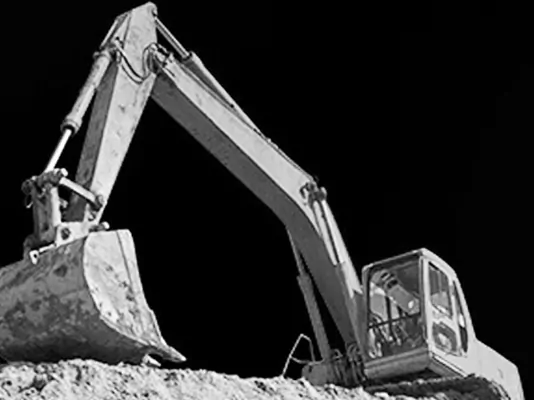Bridging the pandemic chasm
Dr. Shelja Jose Kuruvilla, Damodar Enduri, Shantonu Ghosh

The impact of COVID-19 rampage across the world has been as unprecedented. The lockdown to ‘flatten the curve’ of the pandemic and the consequent economic slowdown has severely hurt the prospects of most economic sectors in India including engineering and construction.
The engineering and construction industry (engineering, procurement and construction (EPC), transmission and distribution (T&D), road construction and building) is the second largest economic sector in the country, after agriculture, and provides a large number of jobs. Even before COVID, many companies in this sector were already fraught with problems of escalating debt and cost overruns. Some were barely hanging on with just enough earnings to cover interest payments on their debt. Now, the entire sector is face to face with even more uncertainties related to project completion, new project financing, and future order flows.
Industry wide problems
When the Central and State governments issued directives for lockdown, all companies were forced to completely stop operations. Even though the complete lockdown has been lifted, the fate of projects in the country continue to be in a conundrum. There are two major causes for this:
- Labour shortage: Despite government allowing construction activity across regions to resume, including in red zones (where non-essential businesses are not allowed to operate), EPC companies are staring at an acute labour shortage – both unskilled and skilled labour.
- Most workers in the construction sector are migrants who were left without work when the lockdown was imposed. When arrangements for transport was made by governments, many chose to return to their villages. Most contractors involved in site work consequently saw a significant exodus of labour.
- This situation is now further complicated by the fear of infection; many workers are hesitating to return. Among these, the lack of skilled workers are most acutely felt since projects cannot be resumed without them. Given this uncertainty, companies are facing a major challenge in planning their site work.
- Supply chain disruption: Absence of adequate labour for operations of factories is also one of the major reasons why the infrastructure supply chain is in doldrums. Lack of labour and consequent production stoppages/trimming at supplier plants has choked supplies. Moreover, having to enforce new health and safety guidelines in their plants is further stretching supplier capacities. Many are facing acute shortage of working capital to restart or scale operations. Shortage of raw material and logistics/transport facilities, sealing/tightening of country/state borders have all added to the melee and culminated in the upending of the supply chain of this sector. Since the entire ecosystem is impacted, it will take time for supply issues to sort out and supplies will ramp-up only in stages.
Consequences:
- Delay of projects: Without timely availability of labour and material, execution schedules will be disturbed and construction activity delayed; ultimately pushing deliveries of projects further. And any delay in a project will have a cascading impact on multiple contractual obligations in the ecosystem since complex contractual arrangements with back-to-back contracts between numerous, unconnected parties, or multiple independent contracts between related parties as part of a composite transaction are typical of the infrastructure sector in India.
- Financial issues: Lockdown and the consequent discontinuation of all project work at site, has had a severe financial impact, as well. The pandemic has been declared a ‘force majeure event’; it would typically entitle a contractor to an extension of time (3-6 months) for the critical delay caused by the event without penalty on milestone slippage. Even so, there would normally be no compensation for expenses incurred for the duration of stoppage of work. This means that all costs including those incurred as damage to construction material, damage and rework of work fronts where preservation could not be done, depreciation on idle plant and machinery, cost of remobilization of men, material and machinery, etc. would all have to be borne by the company. Even the relief provided by RBI in the form of debt moratorium for three months will not compensate for these losses, especially since the monies will have to be paid back at a compounded rate of interest after the relief period.
- This can be brutal for the firms in this sector since most are struggling to put together the working capital needed to reinitiate work. In the last 2-4 months, both billing and payments have suffered. This has deteriorated working capital turns, too.
- The outlook for the long-term is bleak. The cash outflow is clear – interest payments on debt, site expenses, other costs. The inflow of cash, however, is completely uncertain! Without a clear way forward, projects are inevitably going to be delayed. And delayed projects means, crippling milestone penalties, delayed billing and delayed payments.
The silver lining
Unlike many other industries, this one enjoys a silver lining. Most companies in this industry have adequate order backlog to convert to billing in the months to come. Moreover, as India looks forward to kick-starting the economy, the government may roll out concessions or exceptions in the coming days to ease this sector. But the decisions taken by companies today (on resuming operations), will decide how effectively they can catch up on numbers lost in lockdown period.
What not to do
Given that assets are significantly leveraged (operational and under-construction) and there has been a sudden and significant impact on the revenue side, companies will be concerned about liquidity needed to prevent any payment defaults or debt restructuring. In such a scenario, the priority for any firm will be to manage its working capital (more aggressively than ever). Towards this end, companies might typically try to:
- Delay payments to contractors and vendors: If firms delay payments to contractors or try to negotiate better credit terms, the time taken for contractors/vendors to ramp up will go up. Moreover, vendors, functioning with limited capacity and facing cash flow issues, would prefer to serve customers who offer shorter payment cycles. Hence, delaying payments would hinder supplies. Supply delays can lead to reduced billing because a significant part of billing is based on supplies and because interruptions in supply can lead to project delay. Reduced billing will put pressure on working capital and on profits.

Way forward
Since such attempts to control cost can be severely detrimental to the revival and sustenance of operations, the only way to transition from the current issues rapidly, in a win-win manner, is to achieve the following two objectives
- Increase working capital turns, without changing payments terms of vendors
- Increase the rate of billing from the existing order backlog, at a pace much faster than ever before
The only way companies can achieve these objectives is by taking actions to cut down lead time of execution of engineering and construction by at- least 30%. This can be achieved by rapidly implementing the flow principles of Theory of Constraints.
Implementing the flow principles of TOC
Flow in any system is limited by its constraint. In the current circumstances, the major constraint for a company is working capital. In order to kick start operations and to improve flow of project tasks (and consequently projects) at the fastest pace possible, all decisions have to subordinate to this constraint and all actions have to be to ensure that the available liquidity is exploited as efficiently as possible. For this, the following principles have to be implemented.
a) Limit the number of simultaneously open sites (work in progress limit) within a project based on availability of labour/supplies:

A virtuous loop created by limiting number of simultaneously open work fronts
As in the existing scenario, the company will have to start operations with significantly lower material and capacity compared to the beginning of lockdown, instead of trying to resume all the pending work simultaneously, it will be judicious to limit work fronts. Application of thick resourcing (of men, material etc.) can help quickly complete and bill these. The subsequent cash coming in can help the company complete other work fronts – a limited few at a time based on capacity and resources available.
b) Alignment of departments through a global priority system: Care should be taken to choose the right projects to work on from the existing basket of open work fronts. These are ones with the highest potential to realise as much cash as possible and at the earliest. A cross functional team should revisit and revaluate all the projects based on various considerations like which projects are near completion, which are urgent for the client, client’s ability to pay, etc. Projects can be given a sequential queue number, and tasks can be picked up in the order of their queue numbers. If all coordinating departments including design, purchase etc, follow this clear global priority system and focus on work front completion, this can ensure that there is synchronization between all the departments. Interruptions and delays will be dramatically reduced.
c) Focus on full kit (the complete assortment required for execution). Limiting the sites being worked upon will reduce the material and other requirements. But, if these are not available as and when required, site work will be interrupted. So, before activating any work-front, the full kit of men, material, equipment, designs, clearances, etc, have to be secured.
- Ensuring Labour availability: First step needed will be to ensure that labour is available. Considering the current labour problems, this is likely to be an uphill task unless the company can support labour contractors with a significant problem they are currently facing – dearth of cash. If the company makes a one-time advance to contactors (and thus fund their immediate cash concerns) and if the company can make more frequent payments to the labourers (e.g. weekly), cash-strapped contractors and workers will find this attractive, more so because most companies would be trying to get contractors to reduce rates or will be negotiating for longer credit periods.
- Ensuring supplies and equipment: Even if labour is available, without adequate or timely availability of supplies, execution can be disrupted. So it is in the best interest of companies to recce the supplier base (particularly the key, but smaller ones) in order to understand their obstacles for supplies. Based on this assessment, the companies can, if necessary, extend assistance to overcome any financial or operational obstacles in the way of resuming smooth supplies. However, while placing orders, focus should be on material needed for the chosen work fronts (remove value targets on purchase). At the same time, effort should also be made to conserve working capital as much as possible. For instance, idle equipment/supplies from work fronts not being worked upon could be transferred and used before fresh orders (needing more capital outlay) are placed.
Ensuring compliance to Covid norms: The Covid era will be defined by social distancing and sanitization norms. Government may take stringent action on infrastructure companies if the norms meant to prevent infection spread are violated. There can be disruption if such government imposed restrictions are violated. Thus, it is in best interest of companies to include actions that need to be taken/processes to be put in place, to ensure that their sites and site offices do not violate norms as part of the safety full kit requirement.
d) Issue resolution through active task management: The above steps will ensure that projects proceed without interruptions and are completed faster in spite of productivity losses due to reduced capacity thereby maximizing billing. However, every now and then, execution can be held up due to lack of timely decisions or lack of timely issue resolution. Therefore, to crash the elapsed time of such activities and decision making, a system of active task management can be instituted – a process of predefined issue resolution frequency rather than the usual process of intervention close to committed dates. This will enable faster financial and operational closure of projects. A similar system can also be put in place to ensure that government agencies are actively followed up with, clearances are forthcoming and bills are cleared as fast as possible.
These flow rules help reduce lead-time of projects. And the lower lead-time, in turn, leads to increased rate of billing. The working capital requirements and its variability will also drop. Organizations implementing the flow principles have been able to increase the working capital turns many folds. Even after the financial and operational parameters of the company return to normal, TOC flow principles should be adhered to ensure that the company continues to enjoy shorter lead times, better working capital cycles and higher profitability than the rest of the industry.







